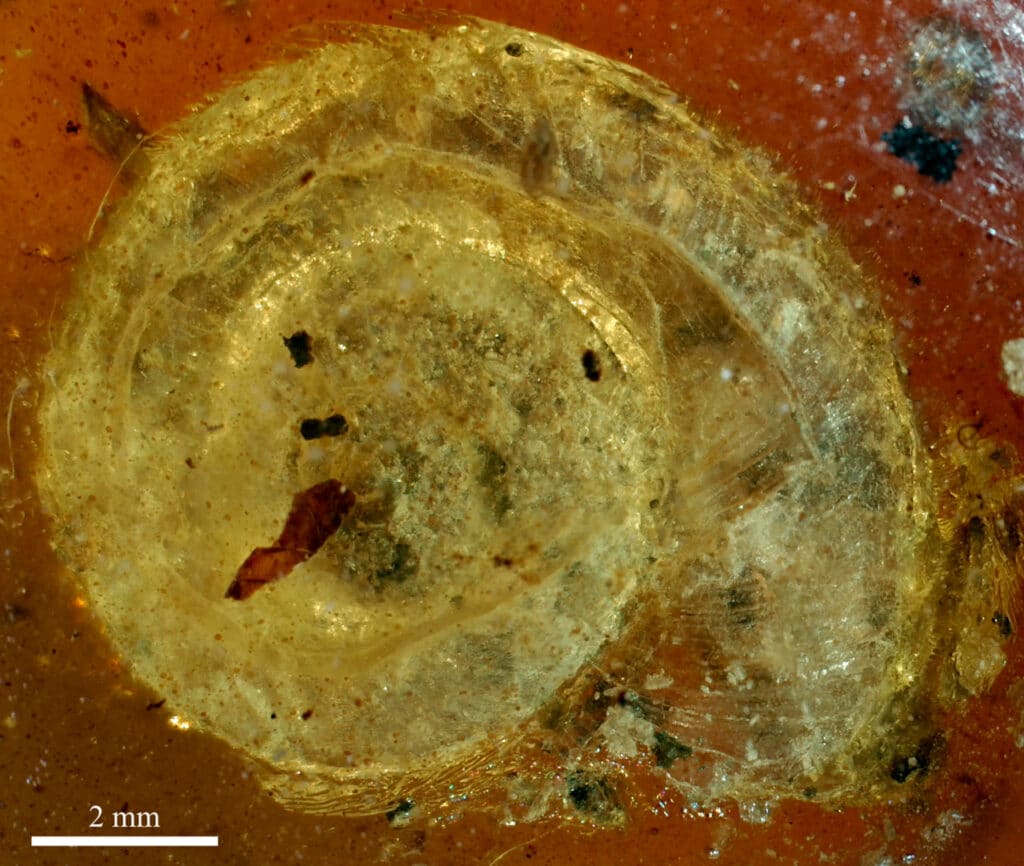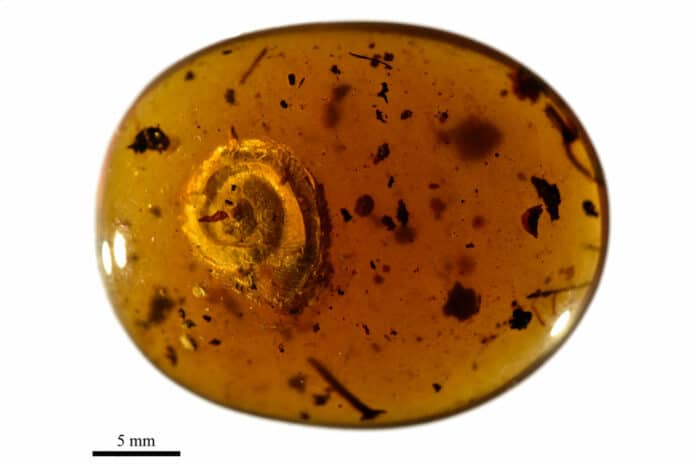Land snails in mid-Cretaceous Burmese amber (ca. 99–98 Ma) have attracted significant interest from paleontologists in recent years. Recently, international scientists, including Senckenberg’s Dr. Adrienne Jochum, have discovered a new species of land snail in an approximately 99-million-year-old piece of amber.
This newly discovered species has been named Archaeocyclotus brevivillosus sp. nov. This is already the sixth species of hairy-shelled Cyclophoridae, a group of tropical land nails found so far embedded in Mesozoic amber, about 99 million years old.
The snail’s shell features short, bristly hairs arranged along its margin. The hairs measure only 150 to 200 micrometers in length. According to scientists, the presence of hairs may have offered the mollusks a selective advantage in their evolution.
The team identified the presence of hairs using classical microscopy and 3D X-ray micro-computed tomography.
Dr. Adrienne Jochum from the Senckenberg Research Institute and Natural History Museum in Frankfurt and the Natural History Museum in Bern said, “It is not uncommon for the shells of fossil and present-day land snails to be embellished with ridges, hairs, nodules, or folds; however, the development of such ‘decoration’ is still a complex process that usually does not occur without a purpose.”
The topmost proteinaceous shell layer creates the hairs on snail shells (periostracum). Numerous families of land snails, such as forest snails or Polygyridae snails, have been found to have hairy shells, indicating that hairiness appeared on multiple occasions independently during the evolution of land snails, even in groups that were very distantly related.
Dr. Jochum said, “The new species, Archaeocyclotus brevivillosus, originates from a Cretaceous amber mine in the Hukawng Valley in Burma, where it was collected prior to 2017. The fossil snail is 26.5 millimeters long, 21 millimeters wide, and 9 millimeters tall. The shell’s outer margin is lined with short hairs bunched around the shell opening. Its name derives from the Latin words brevis (short or small) and villōsus (hairy or shaggy).”

According to scientists, hairiness offered the snails an evolutionary advantage.
Dr. Jochum said, “For example, the hairs could improve the animals’ ability to cling to plant stalks or leaves – something that has already been observed in present-day snails. They may also have played a role in thermal regulation for the snail by allowing tiny water droplets to adhere to the shell, thereby serving as an ‘air conditioner.’ Or they may have protected the snail shell from being corroded by the highly acidic soil and leaf litter of the ancient tropical forest floor. The bristles could also have served as camouflage or protected the snail against a direct attack by stalking birds or soil predators. And finally, it cannot be ruled out that the hairs provided an advantage in sexual selection.”
Journal Reference
- Jean-Michel Bichain, Adrienne Jochum, Jean-Marc Pouillon, Thomas A.Neubauer. Archaeocyclotus brevivillosus sp. nov., a new cyclophorid land snail (Gastropoda: Cyclophoroidea) from mid-Cretaceous Burmese amber. Cretaceous Research Volume 140, December 2022, 105359. DOI: 10.1016/j.cretres.2022.105359
